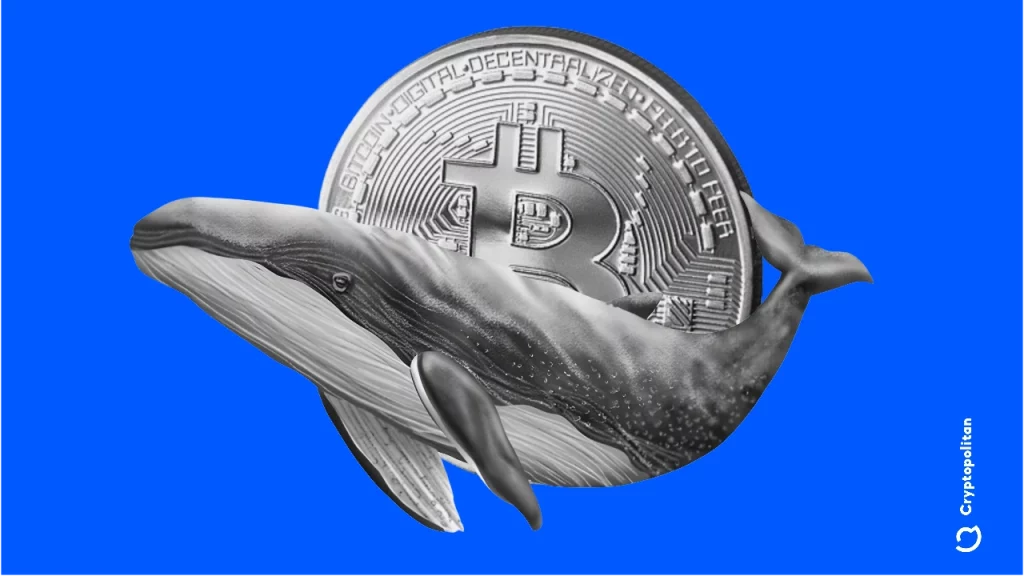The cryptocurrency market has evolved dramatically from its early days of cypherpunks and retail traders experimenting with digital money. Today, the landscape is increasingly dominated by institutional players—hedge funds, asset managers, pension funds, and even sovereign wealth funds—deploying capital into Bitcoin (BTC), Ethereum (ETH), and other major cryptocurrencies. Their moves, often described as “smart money transfers,” are reshaping market dynamics, influencing liquidity, and altering how retail investors engage with digital assets.
By tracking whale movements, analyzing ETF inflows, and understanding institutional dominance in BTC and ETH markets, one can gain insight into not only price trends but also the psychology of retail sentiment. This article explores these shifts, examines case studies of institutional flows, and outlines their implications for the future of crypto adoption.
Tracking Whale Movements and ETF Inflows
The term “whales” refers to individuals or entities that hold significant amounts of cryptocurrency, often large enough to sway market trends with a single transaction. Over time, many of these whales have been revealed to be institutional players, custodial wallets, or ETFs managing assets for thousands of investors.
Whale Movements
- On-Chain Tracking: Blockchain transparency makes it possible to follow large transactions in real time. Analysts use data from platforms like Glassnode, Whale Alert, and CryptoQuant to monitor inflows and outflows from major wallets.
- Market Impact: A single transfer of thousands of BTC or ETH from a whale wallet to an exchange can trigger panic selling, as traders interpret it as preparation for liquidation. Conversely, withdrawals from exchanges often signal long-term accumulation, boosting investor confidence.
- Patterns of Accumulation: Institutional whales often buy during downturns, showing contrarian strategies compared to retail investors who tend to buy tops and sell bottoms.
ETF Inflows
The launch of cryptocurrency ETFs has further amplified institutional influence.
- Bitcoin ETFs: Products like the Grayscale Bitcoin Trust (GBTC) and spot Bitcoin ETFs in regions like Canada and the U.S. allow institutions to gain BTC exposure without directly handling custody. Inflows into these funds serve as a barometer for institutional sentiment.
- Ethereum ETFs: Similar products are emerging for ETH, broadening access for risk-averse investors and integrating crypto exposure into traditional portfolios.
- Liquidity and Stability: ETF inflows tend to reduce volatility by providing steady demand, while also legitimizing crypto in the eyes of regulators and traditional investors.
These whale moves and ETF flows highlight a critical truth: institutional money has become a stabilizing force in some ways but also an amplifier of volatility in others.
Institutional Dominance in BTC/ETH Trading
Once seen as a playground for retail traders, the crypto market now has clear signs of institutional dominance.
Volume and Liquidity
- Institutional players account for the majority of trading volume in BTC and ETH. Their presence ensures higher liquidity, narrowing spreads and improving market efficiency.
- High-frequency trading firms and algorithmic strategies now operate in crypto markets, borrowing practices from traditional finance.
Market Infrastructure
- Custody Solutions: Companies like Coinbase Custody, Anchorage, and Fidelity Digital Assets provide secure storage tailored for institutions, addressing one of the biggest adoption hurdles.
- Derivatives Market: Futures and options on platforms like CME Group have grown rapidly, allowing institutions to hedge positions, speculate, and arbitrage more effectively.
- OTC Trading Desks: Institutions often transact through over-the-counter desks to avoid slippage in public markets, moving billions of dollars without direct impact on exchange prices.
Case Studies of Institutional Entry
- MicroStrategy: The company has famously allocated billions of dollars to Bitcoin as a treasury reserve asset, setting a precedent for corporate adoption.
- Tesla: Though more volatile in its crypto stance, Tesla’s initial purchase of BTC demonstrated corporate willingness to use crypto as a diversification tool.
- BlackRock: As the world’s largest asset manager, BlackRock’s foray into Bitcoin ETFs is perhaps the clearest sign of mainstream institutional integration.
The result is a market where BTC and ETH prices increasingly reflect institutional strategies, hedging practices, and long-term portfolio considerations, rather than solely retail speculation.

Influence on Retail Sentiment
Institutional moves don’t just affect liquidity and infrastructure—they directly shape how retail investors think and act.
The Legitimization Effect
When institutional giants like Fidelity or BlackRock enter the crypto space, retail investors interpret it as validation that Bitcoin and Ethereum are not speculative fads but long-term assets worth holding. This often triggers new waves of retail adoption.
Price Anchoring
Institutional purchases during downturns send strong psychological signals. For instance, when MicroStrategy continued to buy Bitcoin during bear markets, retail traders saw it as a sign of long-term confidence, softening panic and encouraging HODLing behavior.
Sentiment Cycles
- Positive Feedback Loops: ETF inflows or whale accumulation tend to spark retail optimism, which pushes prices higher, reinforcing institutional positions.
- Negative Shocks: Conversely, when whales move large amounts to exchanges or institutions liquidate positions, retail fear can amplify downturns.
Retail vs. Institutional Behavior
Retail tends to be reactive—buying tops during hype cycles and panic selling during crashes. Institutions, however, often adopt counter-cyclical strategies, using retail panic as an opportunity to accumulate assets at lower prices. This dynamic cements the perception of institutions as the “smart money.”
The Changing Power Dynamics in Crypto
The growing role of institutions is both a boon and a challenge for the crypto ecosystem.
Benefits
- Liquidity and Maturity: Greater institutional participation improves liquidity, reducing extreme volatility.
- Regulatory Clarity: Institutions push for clearer regulatory frameworks, which in turn benefit the entire industry.
- Mainstream Adoption: Institutional legitimacy accelerates the integration of crypto into traditional portfolios.
Risks
- Market Centralization: Institutional dominance risks concentrating power in a few hands, conflicting with crypto’s decentralized ethos.
- Derivative-Driven Volatility: Heavy reliance on futures and options can create distortions, such as artificial price suppression or overleveraging risks.
- Retail Displacement: As institutions dominate, retail may feel sidelined or disadvantaged, especially when sophisticated strategies dictate price action.
The balance between institutional power and retail participation will shape crypto’s future trajectory.
Conclusion: Are Institutions the True Drivers of Crypto Markets Now?
Institutional flows—whether through whale wallets, ETF inflows, or corporate treasuries—have undeniably become one of the most powerful forces in Bitcoin and Ethereum markets. While retail sentiment still plays a role, it is often a reaction to institutional strategies rather than a driver of long-term trends.
This shift reflects a maturing industry, one that is no longer defined solely by speculative frenzy but also by calculated, large-scale capital allocation. For retail investors, the lesson is clear: monitoring institutional activity can provide critical insights into where markets are headed.
Ultimately, the interplay between institutional dominance and retail enthusiasm is what gives crypto its unique dynamism. Far from killing retail participation, institutional involvement has elevated the entire sector, providing the stability and validation needed for mass adoption—while still leaving room for volatility, opportunity, and innovation.

























